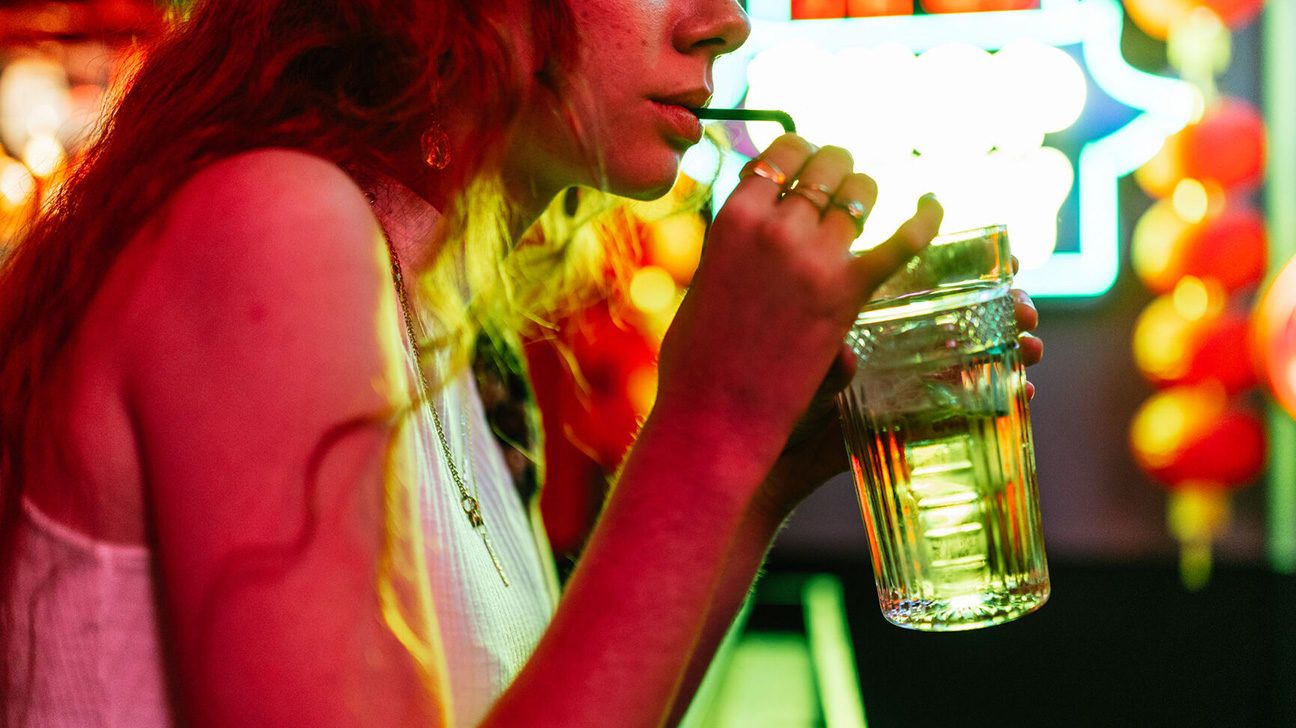Eating a big meal before going out and splurging on top-shelf liquors may help, but the best way to prevent mega morning-after malaise (besides not drinking in the first place) is to stay hydrated all night long.
Typical hangover symptoms — nausea, headache, sore muscles, diarrhea, and the short-lived pronouncement that you’ll never drink again — stem from a range of factors, including your body weight, gender, when and what you last ate (no, a jello shot doesn’t count), among other things.
Alcohol is also a diuretic, meaning it makes you pee more often than you usually would. All those trips to the bathroom strip H2O and electrolytes from your body, leaving you a sad, headachey pile of humanity the morning after a big night out.
Avoid spending the weekend in bed, eating eggs and drinking Pedialyte, by staying hydrated while you’re out on the town. Take a look at these tips to make your next “morning after” a good one.
An easy way to prevent dehydration is to keep the H2O flowing all night long. Alternating between an alcoholic beverage and a glass of water will likely reduce your chance of waking up with a hangover.
Dehydration can shrink your water-based brain tissue, creating painful pressure inside your skull (aka headaches).
Most importantly, be sure to pregame with water before leaving home. Drinking water after each boozy beverage will have little benefit if you start your night with an empty tank.
Choose a beverage that includes at least some water. Water down liquor by asking for it on the rocks instead of straight up. Or consider ordering your whiskey mixed with a splash of water — some experts say it brings out the alcohol’s deeper flavors.
Nope, we’re not talking about nachos and Buffalo wings. Instead of chowing down on sodium-filled bar snacks, refresh yourself with hydrating fruits and veggies.
Watermelon, grapes, berries, cucumbers, celery, melon, and grapefruit all contain tons of water that can hydrate you nearly as much as drinking a full glass.
That veggie plate is calling… especially since between 20 and 30 percent of our total hydration comes from food (rather than water) intake.
Many liquor lovers like adding water to whiskey, but wine? Some sommeliers believe that adding a splash or two of water can improve the flavor of high-alcohol wines.
Another bonus: A healthy water-to-alcohol ratio can help keep those pearly whites clean and prevent dehydration.
With tomato juice, a celery stick as garnish, and plenty of ice, a Bloody Mary can actually help hydration more than hinder it. This is one reason it’s known as a hangover’s best friend.
Avoid commercial mixes by making your own at home, where you can control the amount of salt.
Is there such a thing as a beer that actually hydrates instead of dehydrates? Hold on to your hats — researchers at Griffith University’s Health Institute conducted a study by modifying ingredients in brewskies and testing whether they helped or hindered hydration.
The hydrating beer had a lower alcohol content and was pumped up with electrolytes. Dogfish Head Craft Brewery has its own hydrating brew — but if it’s not on tap at your local bar, you can choose a lower-alcohol beer (just don’t compensate by drinking more of it).
Do you like piña coladas? Good news — the tropical vacation mainstay can help out with hydration, depending on the recipe.
If you’re working with coconut water, fresh fruit and herbs, and just a single shot of alcohol, all that ice can actually make blended drinks pretty hydrating.
On the other hand, sugar-filled drinks made from artificially flavored mixes could dry you out even more. So choose your blender bevs wisely.
It’s tea tea: Decaffeinated tea is a yummy and hydrating base for cocktails. Look for decaf green tea or herbal varieties like lemon, ginger, or peppermint to craft your own fancy cocktail.
Both iced and hot teas work. Ask a bartender about the tea trend or experiment with different combinations on your own.
Get fancy by blending your booze with carbonated water. Although club soda, seltzer, and mineral water are all slightly different, research suggests they can all hydrate just as well as still water.
We don’t mean adding a shot (or two or three) of Malibu. Choosing a cocktail made with coconut water (see piña colada tip above) can help with hydration.
While most sports drinks are high in sugar, calories, and artificial flavoring, coconut water is low in calories and sugar and comes with essential nutrients like potassium and sodium. Research has shown that coconut water is just as effective as sports drinks for hydration.
Try using it as your next mixer — it might save you some pain the next morning.
Hydrate, hydrate, hydrate while you booze. A full stomach and good old H2O is the closest thing there is to a hangover prevention elixir.


